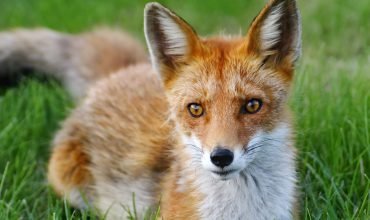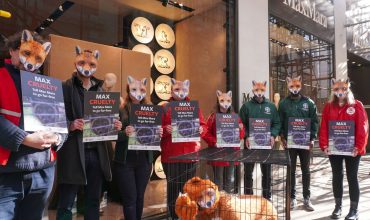The Europeans Citizens’ call for a Fur Free Europe was presented today at the European Parliament: animal protection organisations, scientists and former fur industry representatives reiterated the critical need for the EU to ban the cruel practice of fur farming once and for all, while they stressed the importance of the publication of the full proposals on animal welfare
More than 1.5 million citizens asked for a Fur Free Europe, and 20 Member States have already totally or partially banned fur farming on grounds of animal welfare and public health, sending a clear sign that under no circumstances can fur farms protect the welfare of wild animals. The call to ban fur farms for good has been supported by a number of MEPS as well as Member States at Council level.
In fur farms wild animals are kept in tiny cages, hindered from displaying natural behaviours and killed solely for their fur. In addition, the farms pose a significant risk on animal and human health, and a threat to biodiversity.
“Whatever the claims made by the fur industry, neither welfare regulations nor any industry certification scheme can ever change the reality of sentient animals being condemned to live their entire, miserable lives in tiny wire cages. These wild animals are deprived of their basic freedoms, for a product that has no necessity value. Fur is produced only to satisfy the vanity of a very small and rapidly diminishing number of people. That is unacceptable. We must stop it.”, commented Mike Moser, a former fur industry CEO, who is now advocating to ban fur farms.
Following an initial meeting between the ECI organisers and the European Commission (EC), this parliamentary hearing is part of the formal ECI procedure. By mid-December, the European Commission is expected to provide an official reply.
Meanwhile, animal protection organisations, MEPs and other stakeholders gathered together yesterday in front of the Berlaymont to publicly call on EC President Ursula von der Leyen to publish the animal welfare proposals in the current term. Amongst the proposals, the Kept Animal Regulation should include the ban on fur farming.
“It is hard to believe that anyone would agree that a life on a fur farm is worth living. Looking at the scientific evidence, it is not surprising that European citizens are strongly against fur farming. It is becoming increasingly difficult to defend the indefensible, with the industry’s own supporters turning against it. The moment could not be more favourable for adopting these bans and including them in the Kept Animal Regulation, a vital part of the revised animal welfare revision. The EC has now the chance to deliver on its promise to publish the full proposals by the end of the year.”, commented Reineke Hameleers, CEO, Eurogroup for Animals.
“Mink are active predators whose natural behaviour includes roaming over large areas, hunting, climbing, and swimming. They are highly motivated to seek for food in streams and lakesides where a significant part of their hunting occurs in water. Unlike many other animals in captivity, minks are not suited to live in groups, as they are territorial and typically solitary in the wild. On mink farms, keeping them in small cages, their living conditions are not suited for the life they are adapted for.”, added Bo Algers, Professor emeritus of veterinary medicine, Swedish University of Agricultural Sciences
“The practice of farming animals for fur breaches the most fundamental principles of animal welfare. The farming systems do not align with the species-specific needs of animals bred on fur farms. This should be seriously considered during the ongoing revision of the EU animal welfare legislation.”, concluded Johan Lindsjö, veterinary expert at the Swedish Centre for Animal Welfare (SCAW), Swedish University of Agricultural Sciences.




